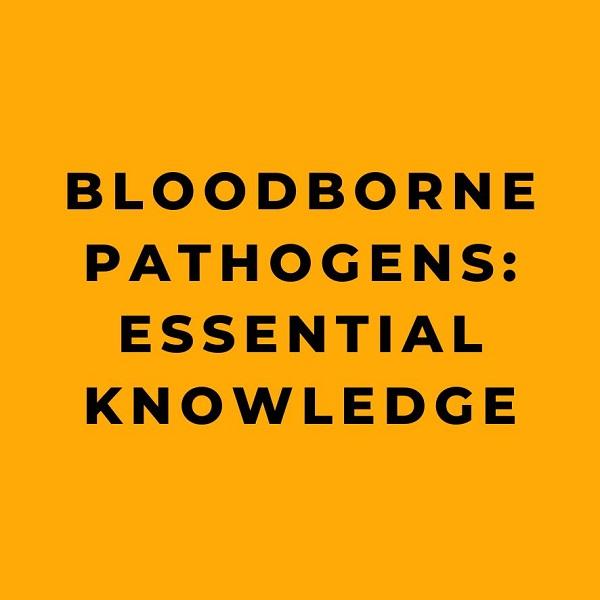Bloodborne pathogens are a serious concern for various professionals, including custodians, housekeepers, maintenance staff, and healthcare workers. These microorganisms, present in human blood and bodily fluids, can cause life-threatening diseases. Understanding the risks associated with bloodborne pathogens and knowing how to protect against contamination is crucial for creating safer, healthier work environments. In this comprehensive article, we will delve into the essential knowledge about bloodborne pathogens, covering their definition, transmission, regulations, safeguards, and best practices to ensure workplace safety.
Understanding Bloodborne Pathogens
Bloodborne pathogens are disease-causing microorganisms that can be transmitted through blood or bodily fluids. The most common bloodborne pathogens include human immunodeficiency virus (HIV), hepatitis B virus (HBV), and hepatitis C virus (HCV). These pathogens pose a severe risk to individuals who may come into contact with infected blood or other potentially infectious materials (OPIM). Therefore, it is vital to understand how these pathogens can be transmitted and the potential dangers they present in the workplace.
Background and Context
The awareness and regulations surrounding bloodborne pathogens have evolved over time, particularly in response to the AIDS epidemic of the 1980s and the rise in cases of hepatitis B and hepatitis C. The Occupational Safety and Health Administration (OSHA) created the Bloodborne Pathogens Standard in 1991 to protect workers who may reasonably come into contact with infected blood or OPIM. This standard outlines the necessary precautions and safeguards to minimize occupational exposure and prevent the spread of infectious diseases. It applies to a wide range of professionals, including healthcare workers, custodians, housekeeping staff, and maintenance crews.
The Bloodborne Pathogens Standard
The Bloodborne Pathogens Standard requires employers to establish a written exposure control plan designed to eliminate or minimize occupational exposure. This plan should outline the preventive measures, training, and protocols to protect workers from bloodborne pathogen transmission. It includes provisions for using a combination of protections, including exposure control plans, universal and standard precautions, vaccinations, personal protective equipment (PPE), and annual employee training.
Key Elements of the Bloodborne Pathogens Standard
1. Exposure Control Plans: Employers are required to develop and implement exposure control plans to identify and minimize occupational exposure to bloodborne pathogens.
2. Universal and Standard Precautions: These precautions emphasize the use of appropriate protective barriers to prevent contact with blood or OPIM. They also include guidelines for handling potentially infectious materials.
3. Vaccinations: The standard mandates employers to provide the hepatitis B vaccination series to workers at no cost within 10 days of their assignment and after the required bloodborne pathogens training.
4. Personal Protective Equipment (PPE): Proper selection and use of PPE, such as gloves, gowns, face shields, and masks, are essential for minimizing exposure to bloodborne pathogens.
5. Annual Employee Training: Employers must provide comprehensive training to employees on bloodborne pathogens, exposure control, and the proper use of protective measures. The training should be conducted by knowledgeable individuals and delivered at an appropriate educational level and language.
Best Practices and Safeguards
In addition to the regulatory requirements, best practices and safeguards play a crucial role in preventing occupational exposure to bloodborne pathogens. These include:
1. Engineering Controls: Implementing safer medical devices and equipment to minimize exposure to blood and bodily fluids.
2. Work Practice Controls: Adhering to safe work practices, such as proper handling and disposal of sharps, to reduce the risk of exposure.
3. Proper Use and Selection of PPE: Ensuring that workers have access to and use appropriate personal protective equipment based on the nature of their tasks and potential exposure.
4. Incident Reporting and Post-Exposure Protocols: Establishing clear protocols for reporting incidents of exposure and providing medical evaluation and follow-up procedures for affected individuals.
5. Training and Education: Providing ongoing training and educational resources to ensure that workers are well-informed about bloodborne pathogens and the necessary protective measures.
Addressing Common Misconceptions and Questions
There are often misconceptions and questions surrounding bloodborne pathogens, such as the perceived risk of exposure, the effectiveness of protective measures, and the implications of non-compliance. Addressing these misconceptions and providing clear, evidence-based answers can help dispel myths and ensure that individuals have accurate information to protect themselves and others.
Conclusion
In conclusion, understanding bloodborne pathogens and the essential knowledge surrounding them is critical for creating a safer and healthier workplace. By comprehensively addressing the definition, transmission, regulations, safeguards, best practices, and practical implications, individuals can gain a thorough understanding of the topic. Adhering to the Bloodborne Pathogens Standard and implementing best practices not only protects employees from occupational exposure but also contributes to a culture of safety and well-being in the workplace. It is imperative for employers and employees alike to prioritize education, training, and compliance with the established standards to effectively mitigate the risks associated with bloodborne pathogens.










